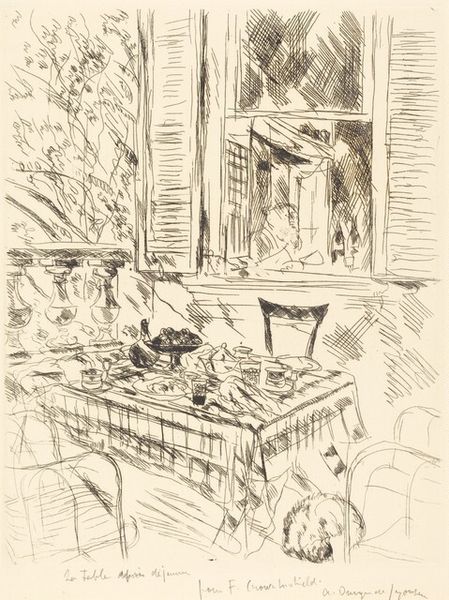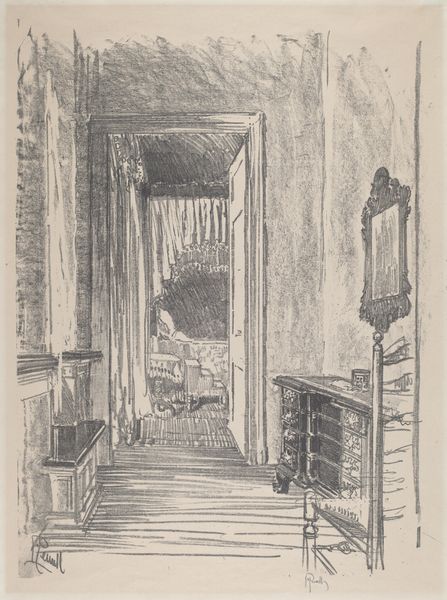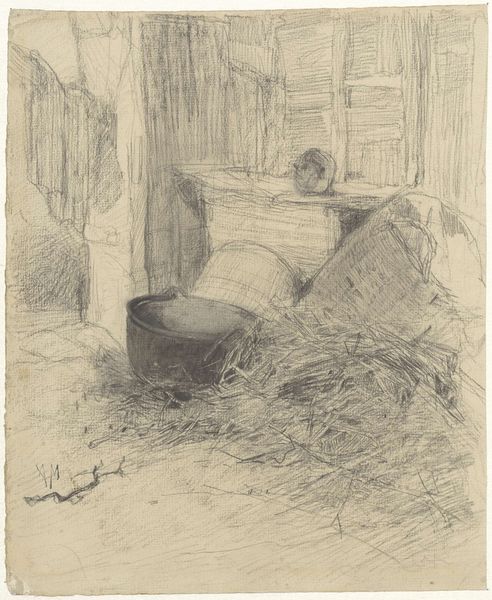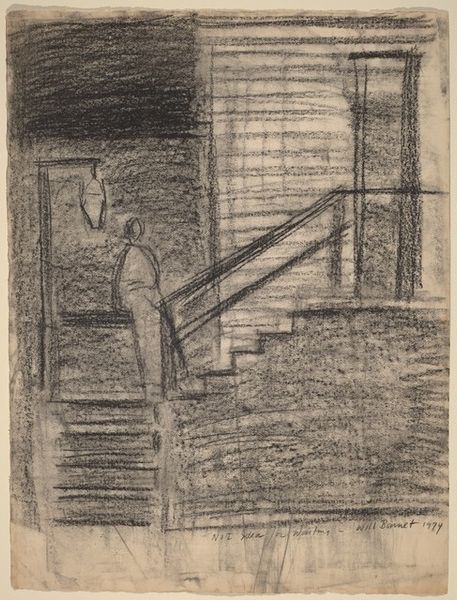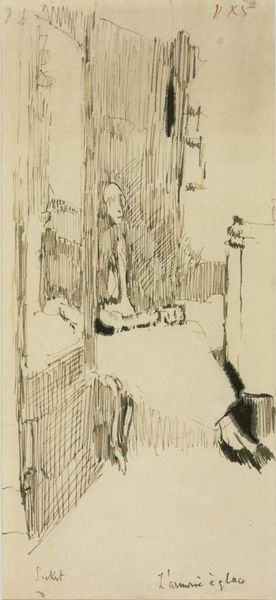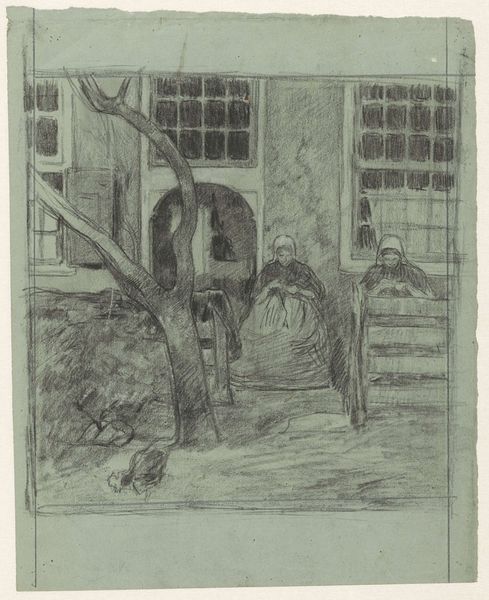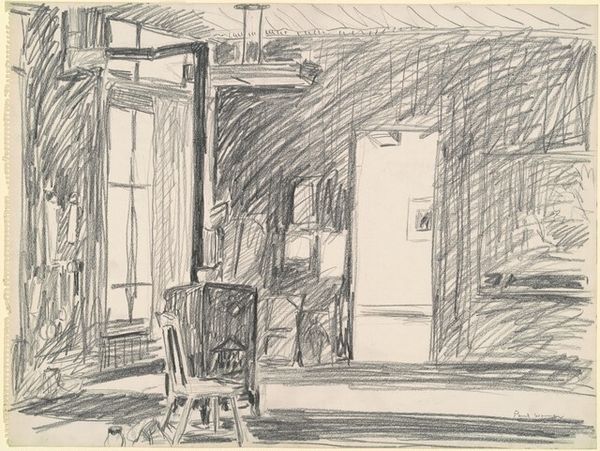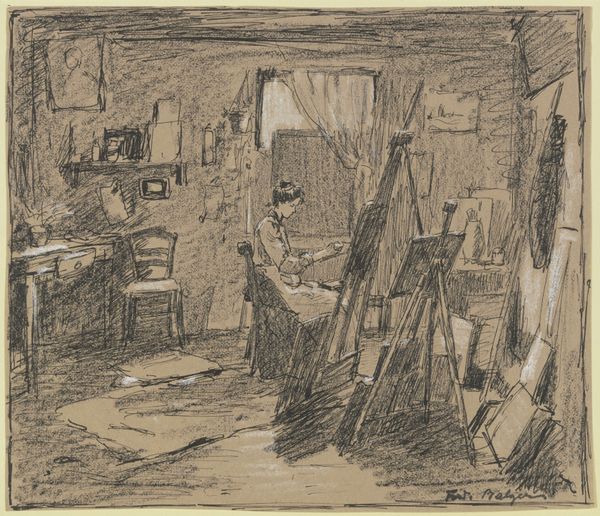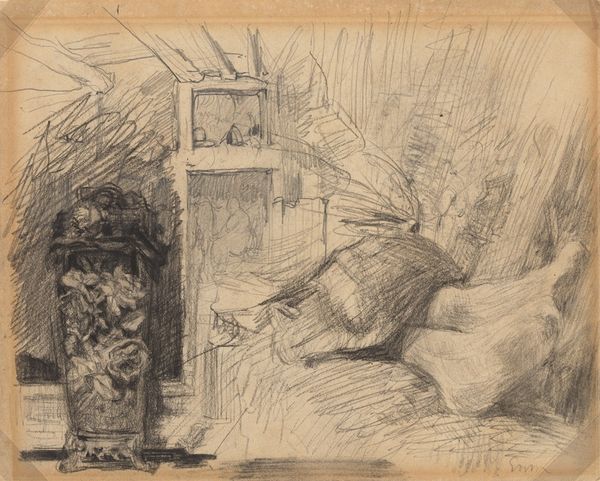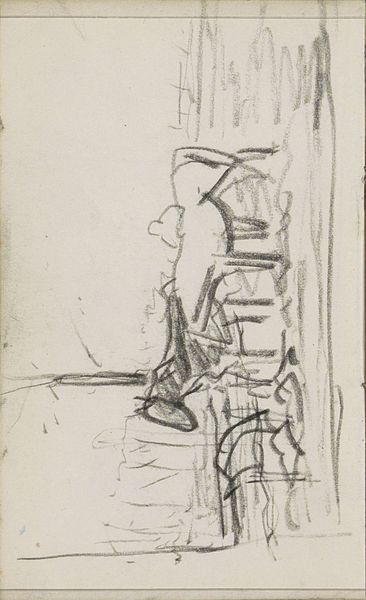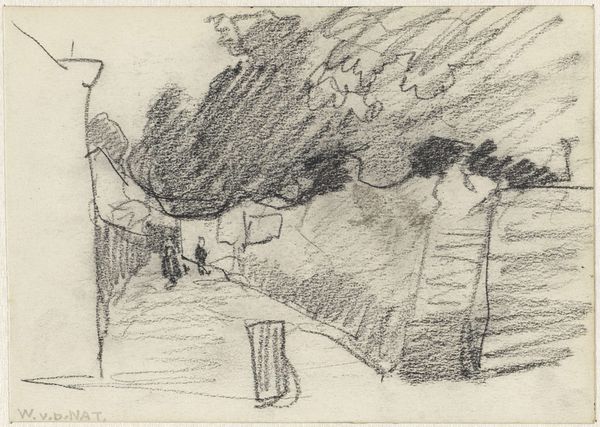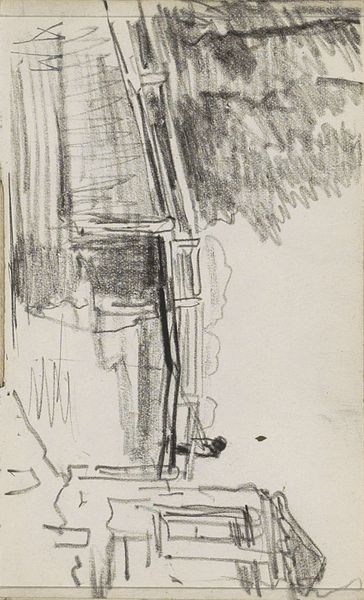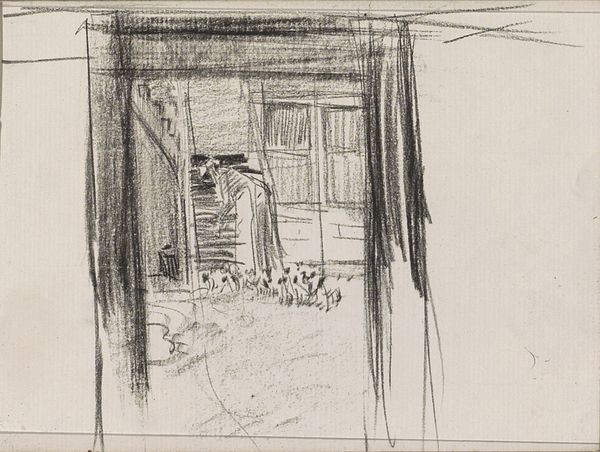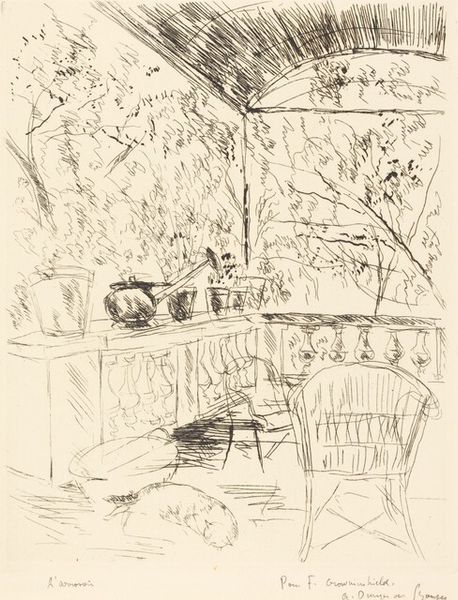
Copyright: Public Domain: Artvee
Editor: Here we have Henry Lyman Saffen’s "Figures Before Window," made with ink on paper sometime between 1914 and 1918. I find the composition quite striking – the strong contrast between light and dark areas really creates an intense, almost claustrophobic atmosphere. What structural elements stand out to you? Curator: The high contrast is indeed noteworthy, contributing significantly to the overall tension. Observe how the artist uses densely packed, almost frantic lines to delineate form and shadow. Notice especially how this contrasts against the relatively untouched, bright space representing the exterior view through the window, or on the expanse of the bed linen. What effect do you think the relationship between those two visual languages has? Editor: I see what you mean. It feels like those different types of linework really divide the interior and exterior worlds, adding another layer to that initial feeling of confinement I had. The internal lines are jagged, nervous and scratchy whereas the external world seen through the window is empty apart from verticals and horizontals. Curator: Precisely. Consider, then, the way in which Saffen has articulated form, and particularly the human figures, almost dissolving them within the totality of the composition. The window then takes on the properties of a screen and a void simultaneously. The drawing uses an expressive linearity that captures the intimate world with an almost unsettling gaze. Editor: So, would you say the power of this piece resides less in what it depicts, and more in the artist’s method of depicting it, the active mark-making and contrasts themselves? Curator: I agree, we are meant to look past any surface understanding of “figures before a window”, and instead find meaning through the structural components that deliver this image. Editor: That's a great observation, to look at how the structure of the picture produces such an immediate response, moving past easy readings. Curator: It underscores how formal analysis enables a more nuanced and enriching encounter with a work of art.
Comments
No comments
Be the first to comment and join the conversation on the ultimate creative platform.
